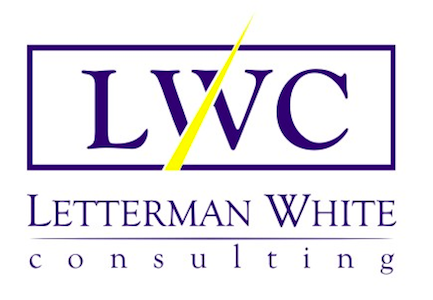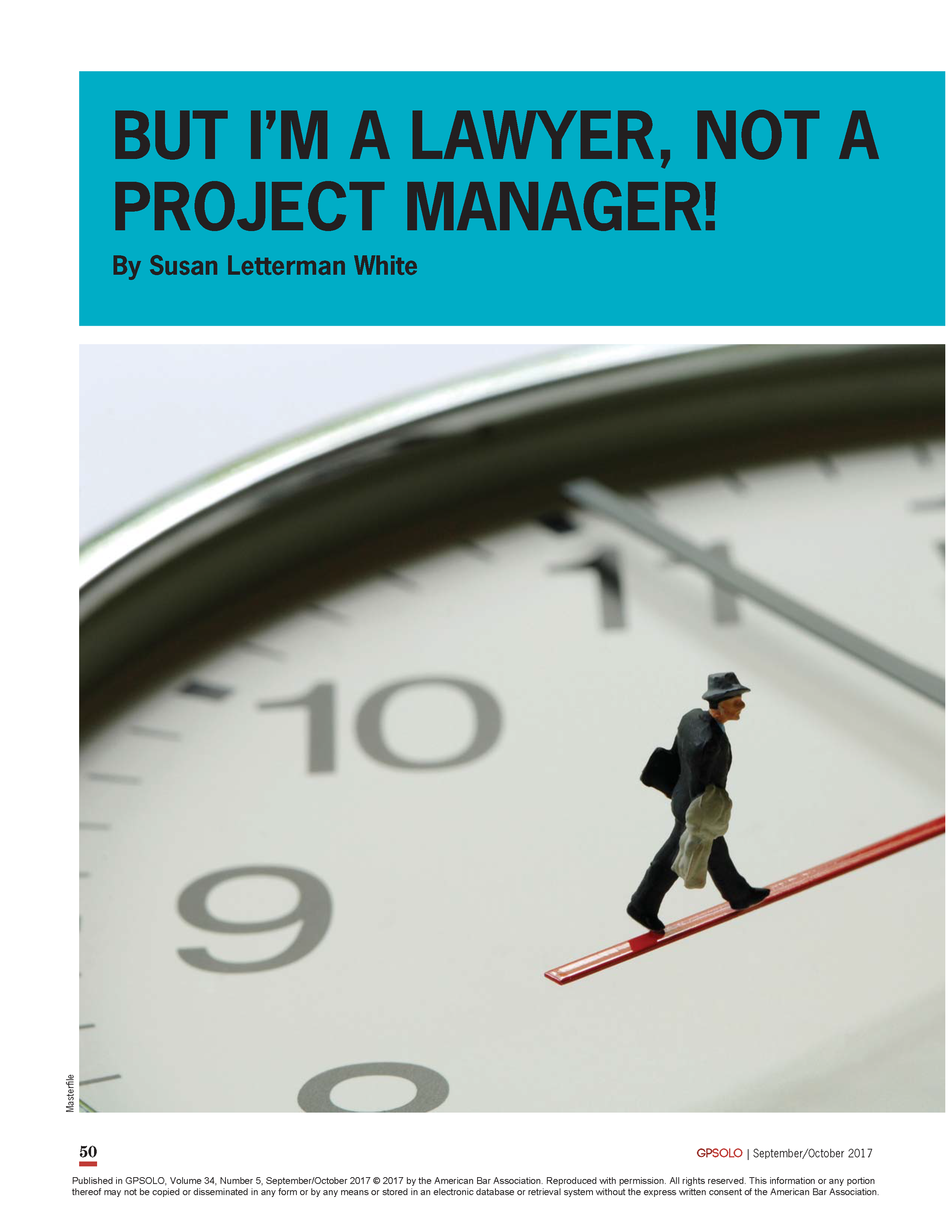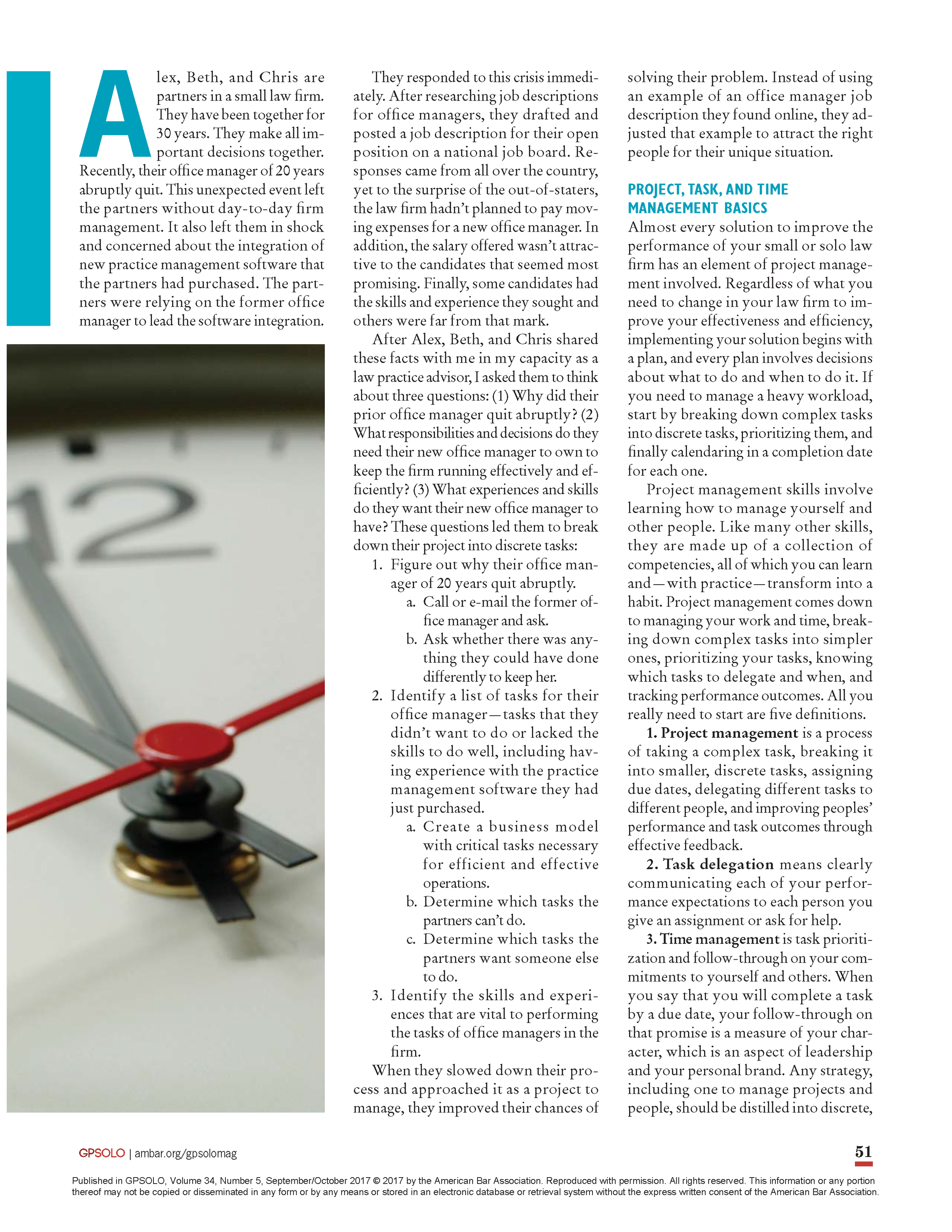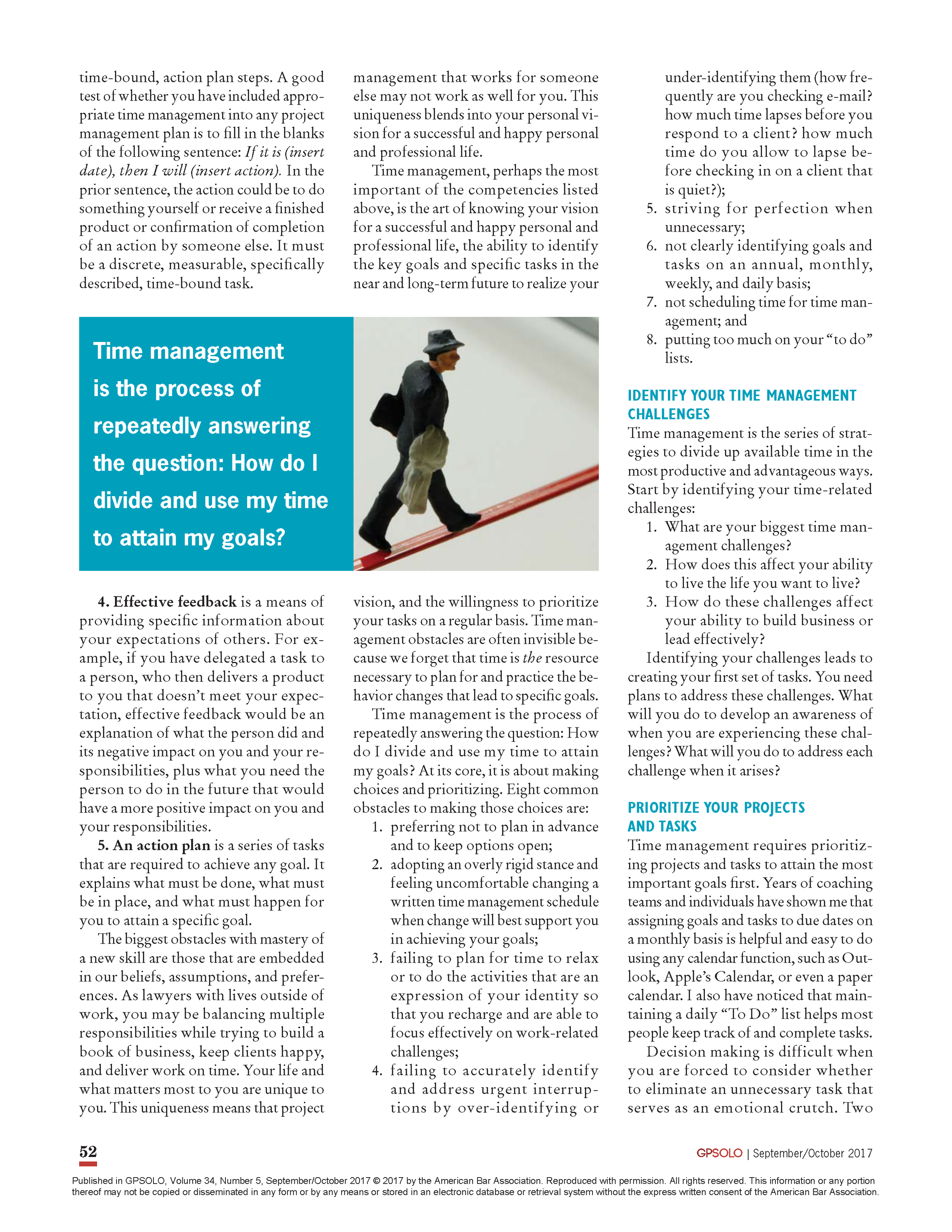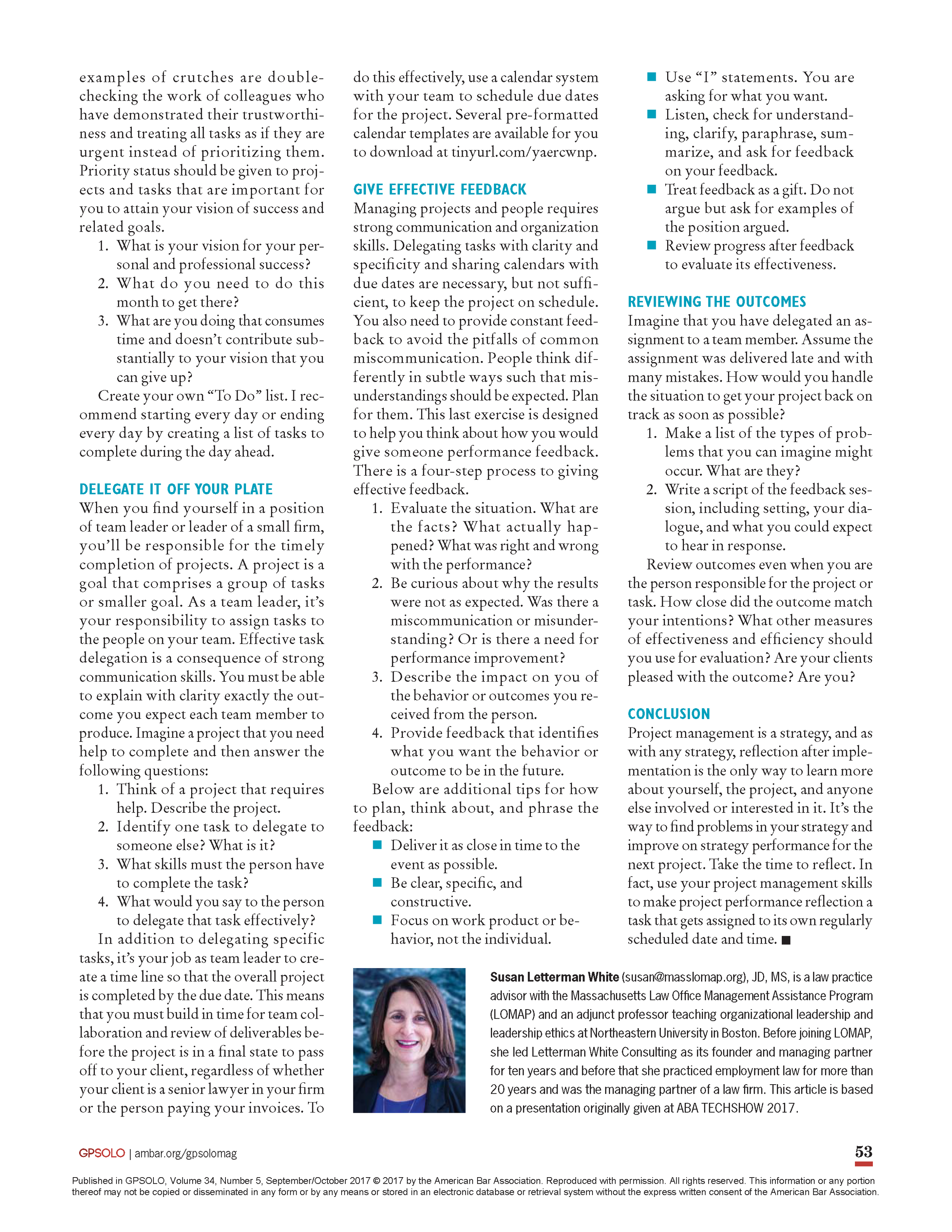The Value of Leadership Development Programs
The cost of Leadership development programs is not only financial. They also divert lawyers’ time and attention away from the legal work. It makes sense to know whether the return on that investment will outweigh the expense.
There is a plethora of research showing a direct correlation between the perception of leaders as outstanding and their organization’s revenue generation, profitability, employee productivity and retention, and customer loyalty and satisfaction.[1] Any company, regardless of purpose, industry, or headquarters, performs better with excellence in leadership as perceived by others. While some results of the research are expected, others are quite surprising.
It is not surprising that organizations with poor leaders perform poorly. It is surprising that organizations with average leaders are substantially outperformed by those with outstanding leaders. The collection of skills that make this difference is also surprising.
Leaders are required to be strategic planners and design step-by-step processes for reaching performance goals, like revenue and profit targets. If they are good leaders, we expect them to meet targets. In fact, there is a direct correlation between the strategic planning capability and organization efficiency, effectiveness, and financial performance. It makes sense that the better leaders are at designing and implementing plans for improving revenue and profit, the better the plans and their execution, and the better the results.
There is also an unexpected, direct correlation between key performance metrics and the perception of people as excellent leaders because of their strengths in helping colleagues solve a problem, seeking out others’ ideas, or a variety of other interpersonal skills, and those skills related to agility, learning, and change. People are evaluated by their bosses, peers, and direct reports as outstanding leaders because of these skills and behaviors and not whether or not their organization is profitable, yet organizations are considerably more profitable when leaders are perceived as outstanding in these skills.
In the legal field, there are always skeptics, who may argue lawyers, legal departments, and law firms are different. Yet, across all industries interpersonal skills matter and their absence often overshadows any value of extraordinary technical expertise. In 2008, the Korn/Ferry Institute published their research showing that the characteristics of “best-in-class general counsel, [are] the same as those defining a Best-in-Class leader.” They were the ones with leadership skills for making complex decisions, managing diverse relationships, creating and innovating, inspiring others, driving results, and getting things done.[2]
It’s not difficult to imagine that people will stop listening to the regular instigators of conflict or the narcists who repeatedly talk about themselves. Yet harmony-seeking, selfless leaders who lack strong interpersonal skills lead companies where knowledge is not shared, ideas are never developed into valuable assets, and collaborative, trusting relationships are never forged. The cost is often existential. I’ve work with several law firms that no longer exist, despite strong revenue and profitability because partners needed harmony and avoided conflict and difficult conversations, literally, at all costs.
What is Leadership?
Leadership is the intentional influence of others to complete projects that require a group effort. Some may argue that there are no group efforts to deliver legal solutions. Law is packed with people who have a preference for independence in their work and a love of applying deep legal expertise to solve problems. However, as the general counsel of a large international company, it’s easier to see that the evolution in role parallels that of the Chief Financial Officer twenty years ago.
Today’s general counsels, along with their CEOs, choose their role. It is between aligning the legal function’s strategy with that of the company or being a technical expert with many different areas of the law. The deep legal expertise is still needed; however, a new set of responsibilities for general counsel has emerged. It includes delegating tasks to the right legal subject matter expert while also assuming a leadership role as strategy partner with the CEO and entire senior leadership team. It is not difficult to see the similarities with the law firm’s managing partner and practice group leaders.
This is a consequence of complexity. Today’s business world is complex as much as it is complicated. The challenges are like managing traffic and building the engine of an automobile. And, so is today’s world for the client who is looking for help managing their wealth, navigating governmental obstacle courses to protect assets, or recovering value lost. It’s the complexity, volatility, lack of clarity, and lack of predictability that requires lawyers have much more than deep legal expertise to help their clients in the ways clients expect and want.
It’s interesting that there is a collection of leadership skills that show up over and over as being correlated with excellence even though research also shows that excellence in leadership is all about the fit between what the leader does and what the organization needs. Winston Churchill was not recognized as an excellent leader until Dunkirk and after WWII, he was voted out of office. There are lots of stories about people who were successful leaders in one organization only to be fired for poor performance shortly after moving to a new one.
Leadership is about competencies (sometimes called skills, capabilities, abilities), not styles or business models per se. Competencies are expressed through every style that meshes with every law firm from those with a lockstep compensation business model to those with an individual achievement model. A decision to skip leadership development based on the belief that lawyers and law firms are too different from every other business is not a logical, analytical, or sensible decision. It is contrary to the existing evidence. When a firm or law department is not performing up to its highest potential, that, in fact, is evidence of the need for leadership development.
The answer to the question of whether or not leadership development is sufficiently valuable is obvious when you examine the right data. If data about the law firm or law department’s key performance indicators is weak or average, the value of leadership development far outweighs its cost. The trickle-down effect of good or bad leadership will always impact productivity, client satisfaction, employee and associate retention, profitability, innovation, revenue, and culture.
Designing Leadership Development Programs
Focus on Excellence
Design leadership programs to develop excellence in the competencies that matter most for the organization, industry, role, and career level. Extensive research tells us that poor leaders cost an organization in lost revenue, profitability, and employee performance but the surprise is that the performance difference between organizations with average leaders and those with outstanding leaders is dramatic. Aim for excellence in leadership. Great matters. Good is not good enough.
The aim of most developmental programs is to eliminate weaknesses instead of developing strengths. There is a difference between a fatal flaw or career stopper and a weakness. Research has repeatedly shown that selecting one to three skills that are among the relative strengths of a person and honing them is more likely to propel the person’s career forward than is turning a weaker skill into an average skill.
Focus on select behaviors
Include the behaviors that routinely show up in high-performing organization across all industries, geographies, and organizations and a variety of research studies. There is considerable data that successful leaders are achievement-oriented, able to influence the thinking, emotions, and actions of others, and are able to learn and adjust to change. Many of the related behaviors are:
1. Making complex decisions
2. Demonstrating a learning mindset and resilience
3. Taking initiative
4. Mediating and negotiating conflict and differences
5. Establishing stretch goals and plans to achieve them
6. Building relationships and influencing people
7. Attracting, developing, and optimizing diverse talent
8. Being courageous, trustworthy, and authentic
9. Being flexible and adaptable
10. Have a client and outside focus
In addition to behaviors that routinely show up in high performing organizations, legal expertise, financial acumen, technology competency, and ethics are important capabilities for lawyers. Communication for lawyers includes capturing and retaining the attention of prospects and clients through conversations about how to create, retain, or recover what the client considers valuable in addition to advocating, mediating, and negotiating to resolve conflict. These are the differences that explain why excellence is also a matter of “fit” between the leader and organization. Yes. There are some leadership differences that legal industries leaders need.
Each capability is really a combination of different skills, behaviors, and approaches. For example, having a client focus, means developing and demonstrating an understanding of what motivates your clients’ decisions. It means knowing what they want and expect, rather than what legal solutions they need. Communicating with clients means explaining legal solutions and client responsibilities clearly and concisely and also conveying empathy and understanding of their perspective on value because value to a client is not how much time it takes you to have a conversation or write a brief. Having an outside focus means noticing changes on a macro and micro level, from your prospective clients and competitors today to economic, demographic, and social changes that affect who your prospective clients and competitors may be in a year and your options for connecting with them.
Measure Using Standards
Since the measure of effective leadership is the perception of subordinates, peers, and bosses, use a 360º assessment tool to establish baseline and capture improvement measures before and after developmental efforts. A well-validated 360º assessment is the best predictor of leadership talent potential and the best measure of current levels of competencies. A good assessment defines the behaviors being measured and on a Likert scale will measure degrees of excellence. Once you have data about the baseline and improvement aims, you can create a step-by-step action plan for leadership performance improvement.
An example, from the Korn Ferry Leadership Architect model and assessment defines a “towering strength” as rare, “the best people may have only a few towering strengths.” It defines a “serious issue: as a “pressing need to improve…hurting performance…career could be stalled or stopped” because of it. A good assessment defines the skills being evaluated. An example defines the skills of “Drives Results” as a person who “has a strong bottom-line orientation. Persists in accomplishing objectives despite obstacles and setbacks. Has a track record of exceeding goals successfully. Pushes self and helps others achieve results.” Standards, objective performance criteria for leadership competencies makes a difference.
Develop Throughout a Career Using Traditional and Untraditional Tools
When the details of an individual’s career intersect with the details of an organization’s talent cycle, there is a fit. A talent cycle is the series of processes that work together to create a consistent pool of people with the right skills and fit with the organization so that the organization is able to carry out its purpose. It begins with: (1) recruiting for defined positions; (2) making the decision to hire; (3) the onboarding process; (4) the developmental and evaluation processes; (5) career advancement, reward, recognition, and compensation; and (6) termination. Development and evaluation work in tandem.
The most widely accepted theories on how to develop new knowledge and skills in adults combine traditional learning methods, like lectures and reading with the ongoing application and practice of new behaviors over time with reinforcing and redirecting feedback to master a competency. After a person decides to strengthen a capability, that person studies and learns a new skill, then applies the skill to a real-life situation and practices it over time. Ideally, the learner receives outside feedback and reflects on its effectiveness until it becomes an outstanding strength admired by many and possessed by few people. Sometimes performance coaching is included as a means to emphasize reflection. Coaching is the preferred method for helping senior leaders and “C-Suiters” to hone their leadership skills. Leadership development efforts that add objectively measurable value to any organization include using the skill with regular job duties. It is the extensive practice of a skill over time that transforms an average skill into an outstanding one.
An important leadership skill for most lawyers is business development. This is relationship-building communication that captures the attention of prospective clients and influences their decision to hire the lawyer. There are several components to the communication skill including understanding and being able to notice communication preferences and differences, learning to adjust your own style, and when to say what in a “sales” conversation. There is information to consume by reading or watching a video (traditional learning methods) followed with practice time including role play to improve new behaviors. Untraditional learning methods like role-play, performance feedback, and coaching support the required practice to transform knowledge into behavior and beginner behavior into talented behavior.
People become expert in a skill with practice and coaching. Think of top athletes and musicians. They all practiced every day for many years before becoming experts in their fields. It’s the same for any skill. You learn how to do something, engage in intensive practice often with coaching, and then plateau without continued practice and an intention to improve. Whether a leader wants to hone business develop or management skills, it takes an intensive learning period that may include watching other leaders, receiving formal and traditional training, coaching, and planning actions in advance.
[1] John H. Zenger and Joseph R. Folkman, The New Extraordinary Leader, Turning Good Managers into Great Leaders pp.31-41, 281(2020)
[2] Nancie Lataille and Gabriella Kilby, The Legal Function Transformed: Best Practices of Today’s General Counsel (2008)
